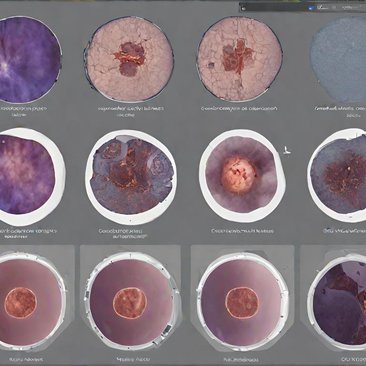Technology Goals
OpenCV (Open Source Computer Vision Library) is one of the most widely-used open-source libraries for computer vision, machine learning, and image processing. It provides a comprehensive set of tools and algorithms for analyzing and processing visual data in real time. OpenCV allows developers to perform tasks such as object detection, face recognition, video processing, and feature extraction with ease, making it an essential tool for developing applications in fields like robotics, healthcare, automotive, security, and more.
OpenCV supports a wide range of programming languages, including Python, C++, and Java, making it accessible to developers across various platforms. The library is optimized for real-time applications, enabling efficient image and video analysis with minimal computational overhead. It can be used in conjunction with machine learning frameworks to enhance image recognition, detection, and tracking capabilities, and it is widely adopted in research, commercial applications, and prototyping.
In our projects, OpenCV is used to implement complex image processing workflows and computer vision algorithms. Whether it's detecting objects in real-time video streams, analyzing medical images, or powering autonomous systems, OpenCV’s powerful capabilities make it the go-to library for handling visual data efficiently and effectively.
Strengths of OpenCV and Computer Vision in Our Projects
OpenCV and computer vision technologies provide a variety of advantages for real-time image and video analysis, including:
- Real-time Image Processing: OpenCV is optimized for real-time performance, making it ideal for applications that require rapid analysis of video streams or live camera feeds. This is essential in applications like surveillance, autonomous vehicles, and robotics, where quick decision-making is required based on visual data.
- Wide Range of Algorithms: OpenCV comes with built-in support for a wide variety of image processing algorithms, including object detection, face recognition, edge detection, and contour analysis. These algorithms are widely used in applications like facial recognition, augmented reality, medical imaging, and industrial inspection.
- Cross-platform Compatibility: OpenCV is compatible with multiple operating systems, including Windows, Linux, macOS, and Android, making it a versatile library that can be deployed across various platforms. This makes it easier to develop cross-platform computer vision applications.
- Integration with Machine Learning: OpenCV can be integrated with machine learning libraries such as TensorFlow, PyTorch, and scikit-learn to enhance its capabilities. For example, OpenCV can preprocess images for machine learning models, allowing for more accurate object detection and recognition tasks.
- GPU Acceleration: OpenCV supports hardware acceleration using GPUs through libraries such as CUDA and OpenCL. This significantly improves the performance of computationally intensive tasks, such as large-scale image analysis or high-resolution video processing.
Comparison with Other Image Processing Tools
- OpenCV vs. MATLAB: While MATLAB is a powerful tool for image processing and prototyping, it is not always optimal for real-time applications. OpenCV, on the other hand, is specifically optimized for performance, making it a better choice for production-grade applications that require high-speed image processing, such as robotics or real-time surveillance.
- OpenCV vs. TensorFlow: TensorFlow is primarily a machine learning framework, while OpenCV is focused on image and video processing. However, the two can be combined, with TensorFlow handling deep learning tasks like object detection and OpenCV handling pre-processing, post-processing, and feature extraction.
- OpenCV vs. Dlib: Dlib is another library used for computer vision tasks such as facial recognition and object tracking. While Dlib excels at certain specialized tasks, OpenCV provides a much wider range of tools and is more widely supported, making it a more versatile choice for general computer vision and image processing applications.
Real-world Applications in Client Projects
- Autonomous Vehicle Navigation: For an autonomous vehicle project, OpenCV was used to process real-time video data from cameras, enabling the detection of road signs, lane markings, and obstacles. OpenCV’s real-time capabilities allowed the vehicle to make decisions on the fly, improving safety and navigation accuracy.
- Face Recognition System: In a security application, OpenCV was integrated into a facial recognition system that allowed users to log into their accounts using face detection. OpenCV’s Haar Cascades and deep learning-based detection algorithms enabled accurate and fast recognition of user faces in various lighting conditions.
- Medical Image Analysis: For a healthcare client, OpenCV was used to analyze medical images such as X-rays and MRIs. The image processing algorithms helped identify abnormalities and enhance the images for further diagnosis, streamlining the workflow for healthcare professionals.
- Industrial Inspection: OpenCV was used to develop an automated quality control system in an industrial manufacturing environment. The system processed images from high-speed cameras to detect defects in products in real time, ensuring that only high-quality items were shipped to customers.
Client Benefits and Feedback
Clients using OpenCV have experienced enhanced image processing capabilities and faster development cycles for their computer vision applications. In an autonomous driving project, the client praised OpenCV’s ability to process camera data in real time, allowing the vehicle to make critical decisions on the road. Another client in the healthcare sector appreciated how OpenCV’s image processing algorithms helped improve diagnostic accuracy by enhancing medical images.
In industrial automation, the ability to perform defect detection in real time using OpenCV led to significant improvements in quality control processes. By automating visual inspection, the client reduced human error and increased the overall efficiency of their production line.
Conclusion
OpenCV is a versatile and powerful tool for handling image processing and computer vision tasks. Its real-time performance, extensive range of algorithms, and ease of integration with other AI and machine learning tools make it an essential library for developing advanced image analysis applications. Whether used in autonomous systems, healthcare, security, or industrial automation, OpenCV provides the tools and performance needed to develop high-quality, scalable solutions for processing and understanding visual data.

